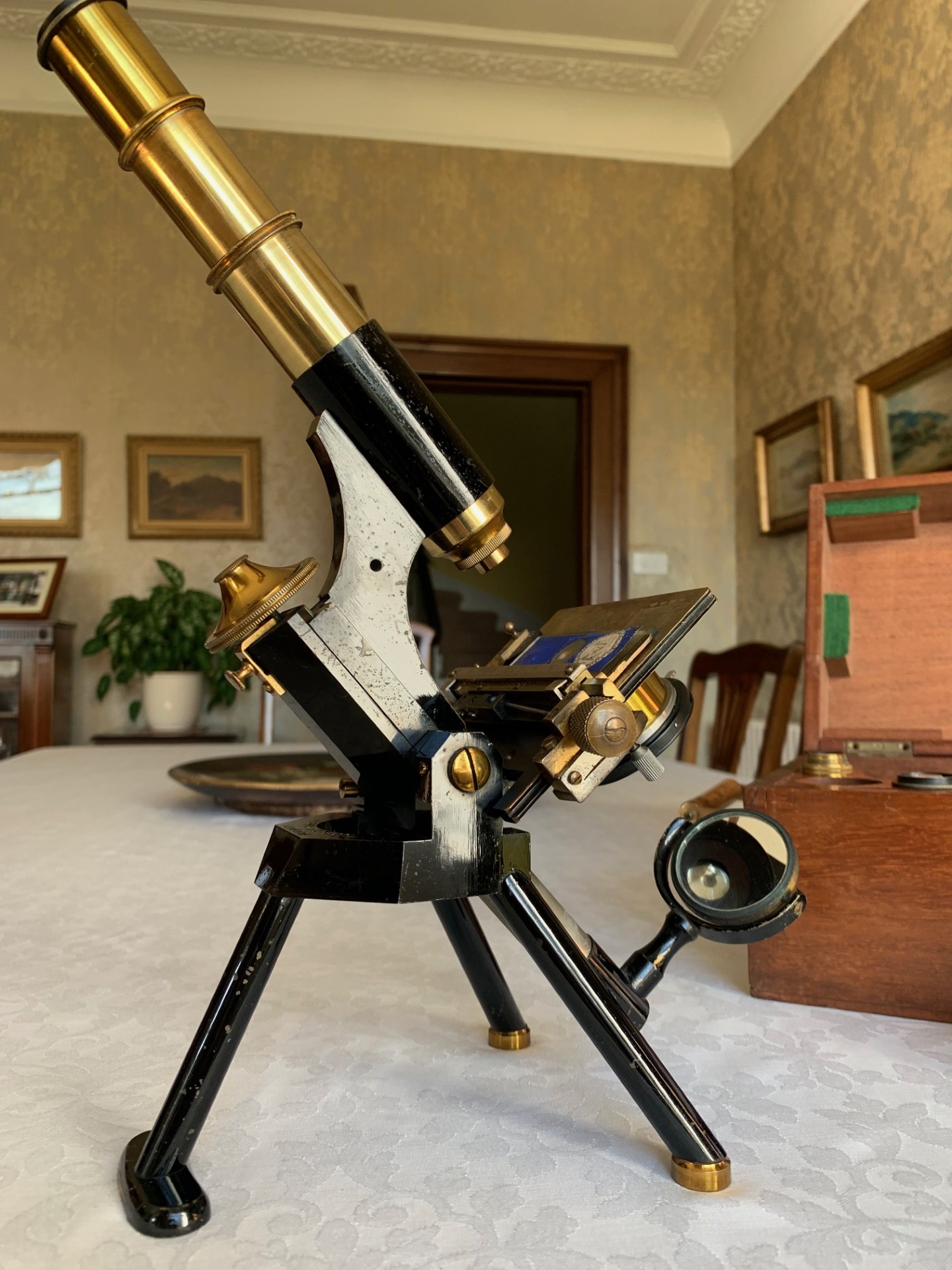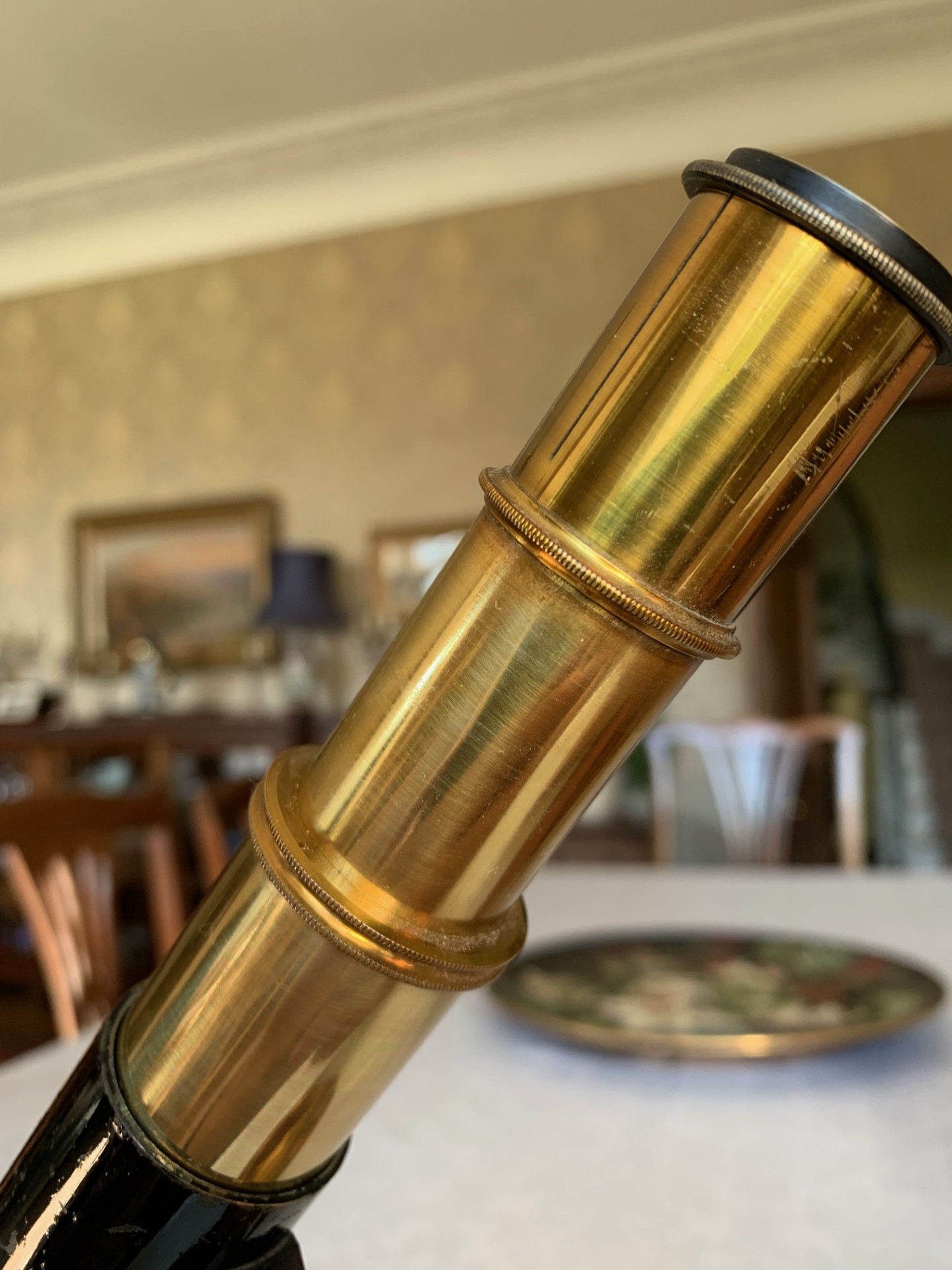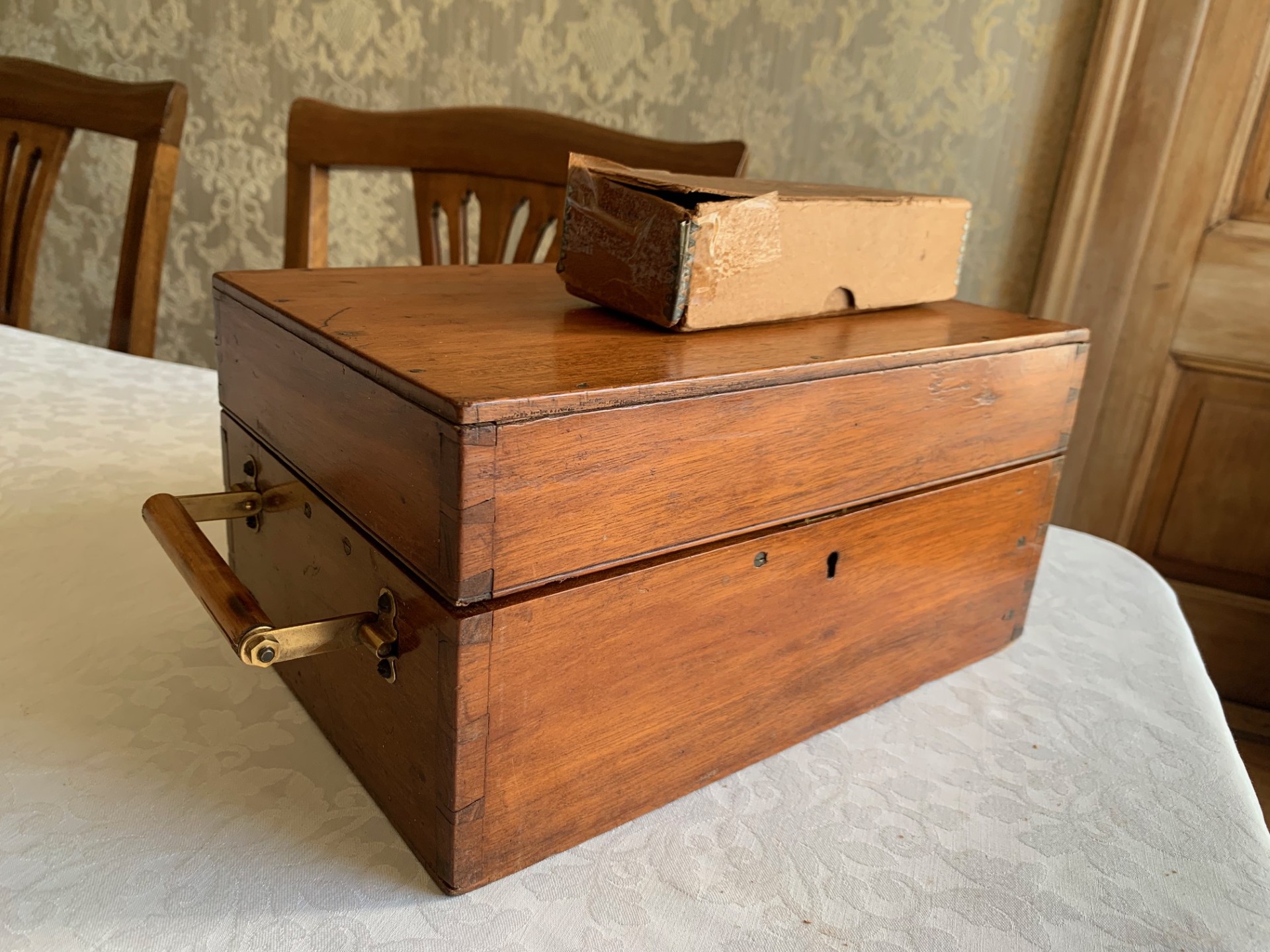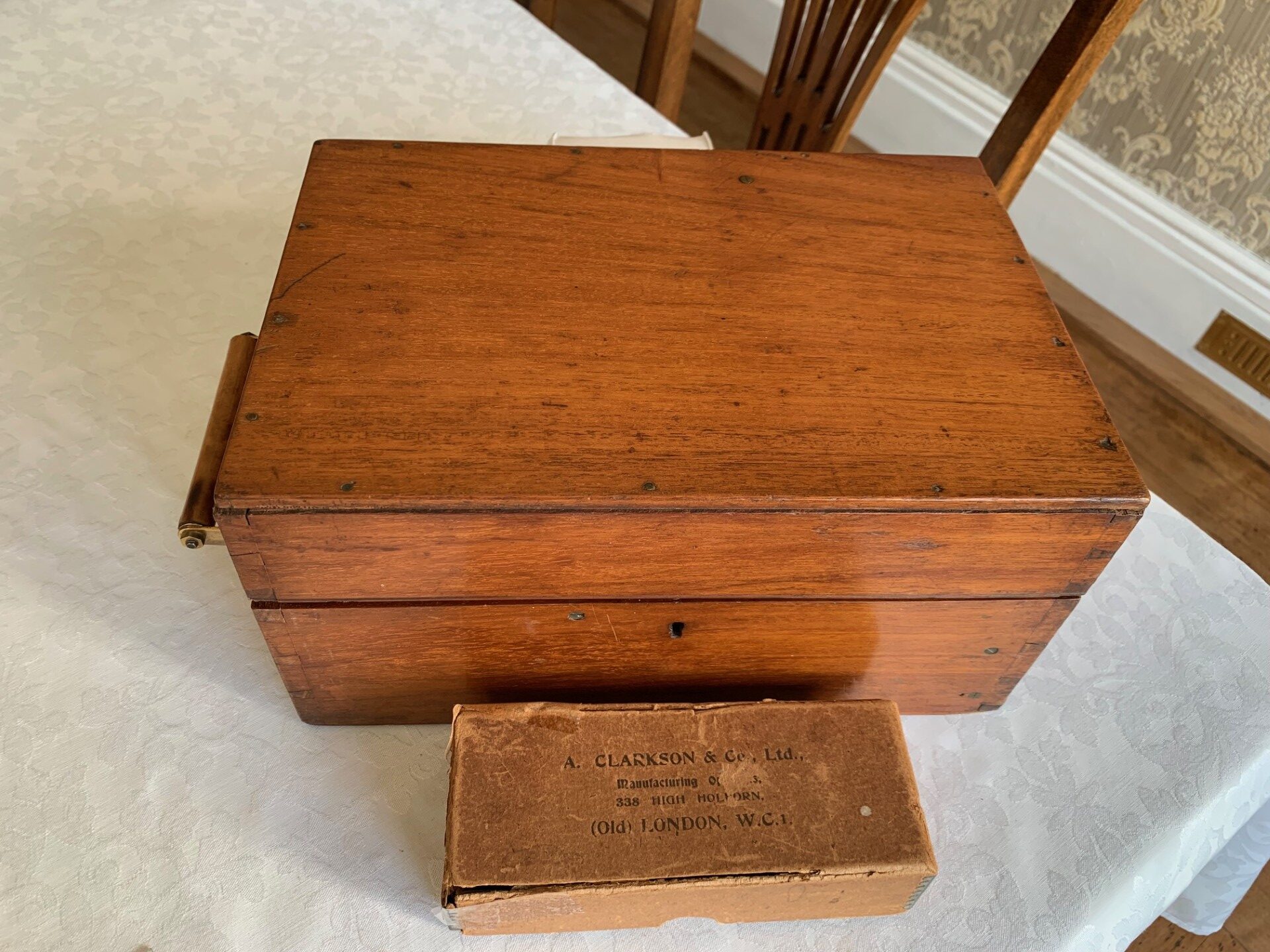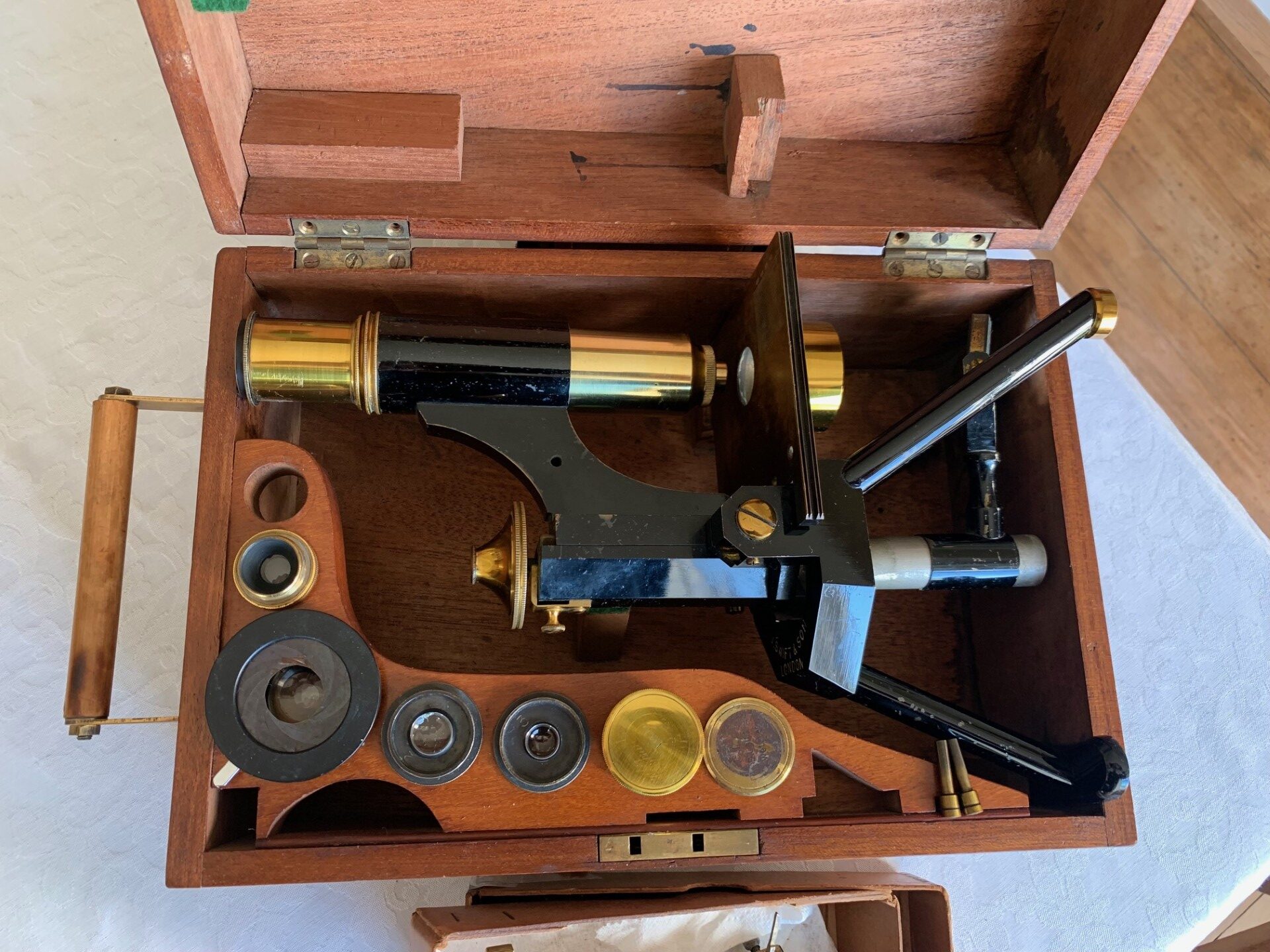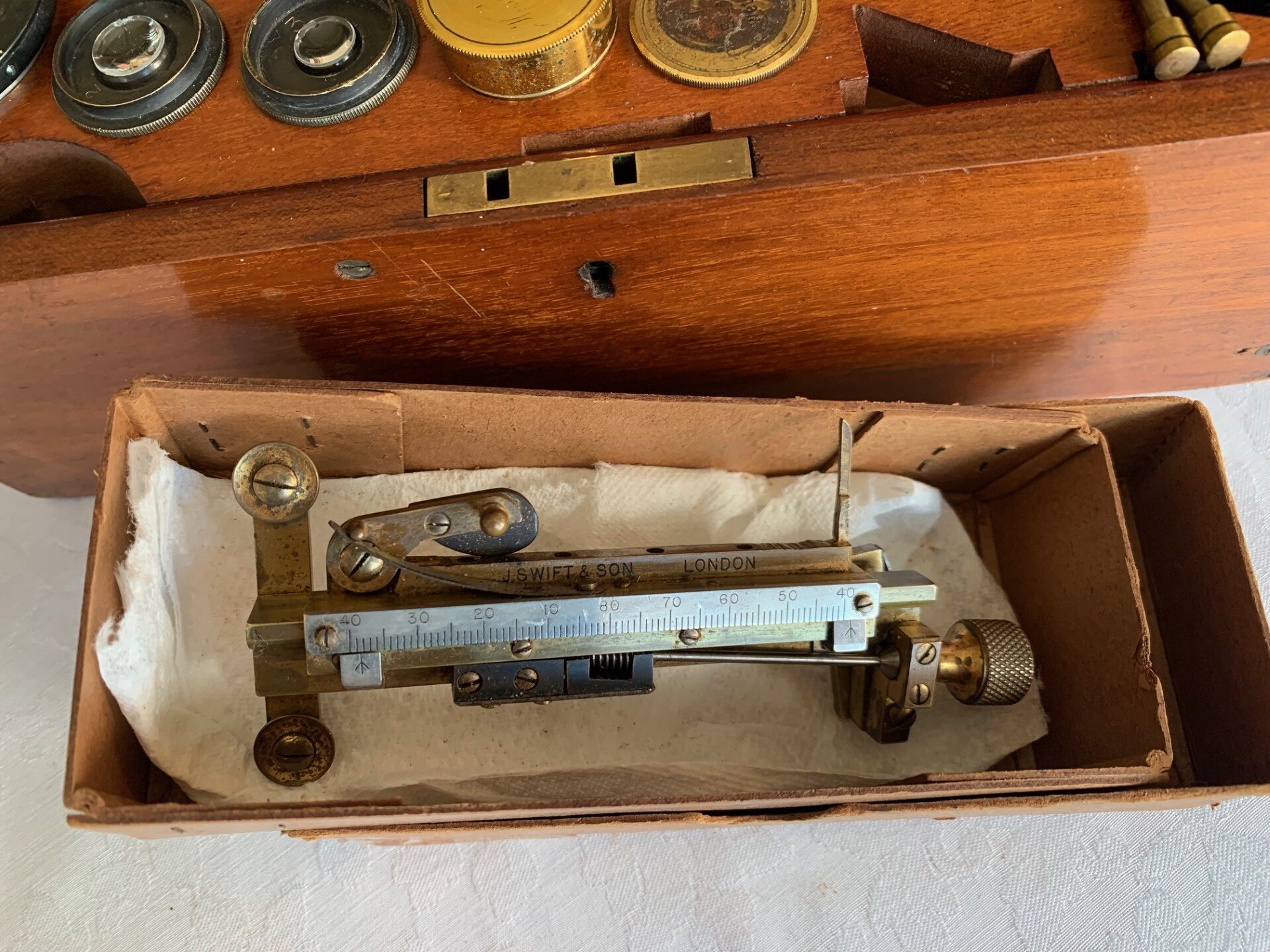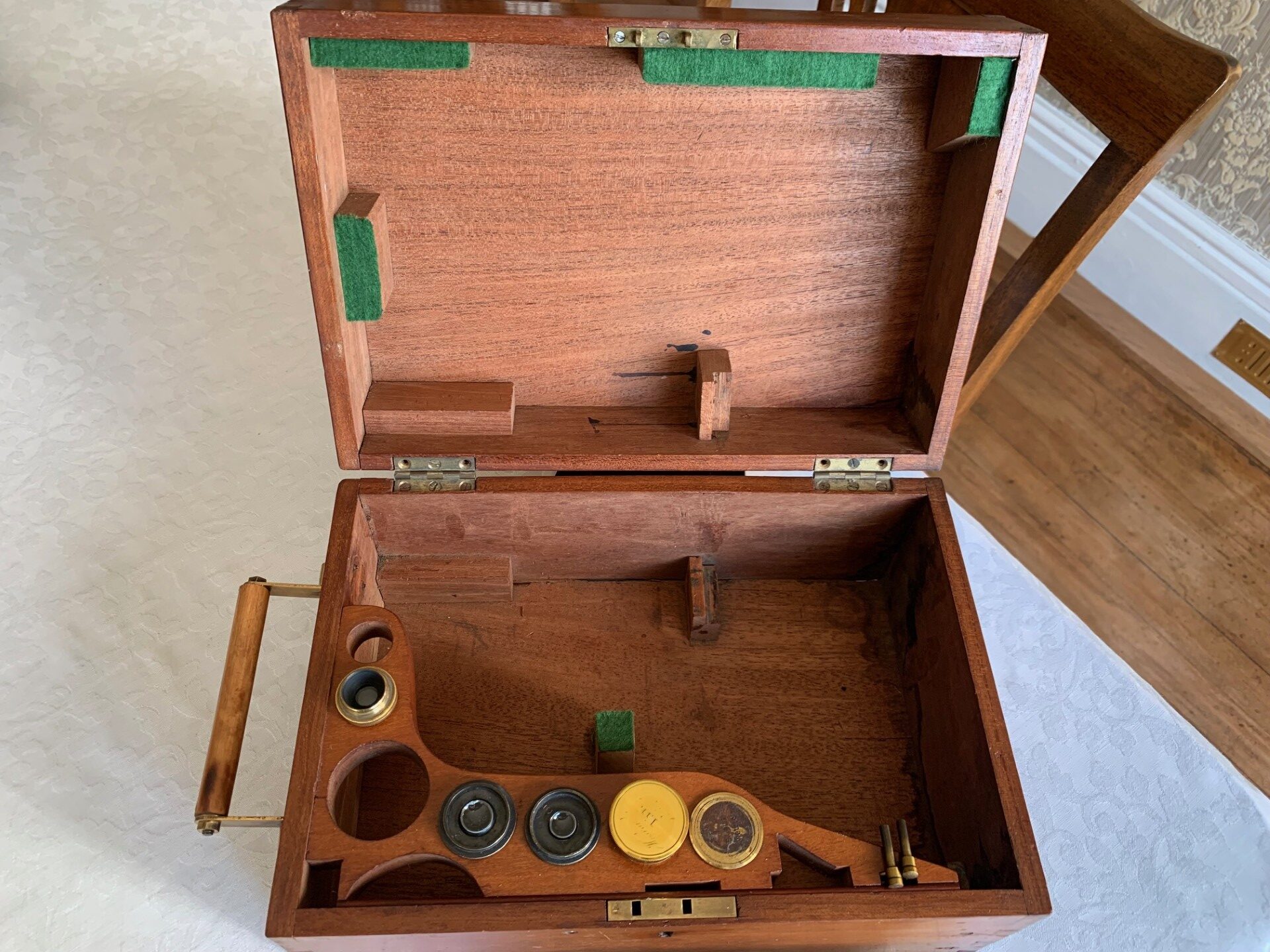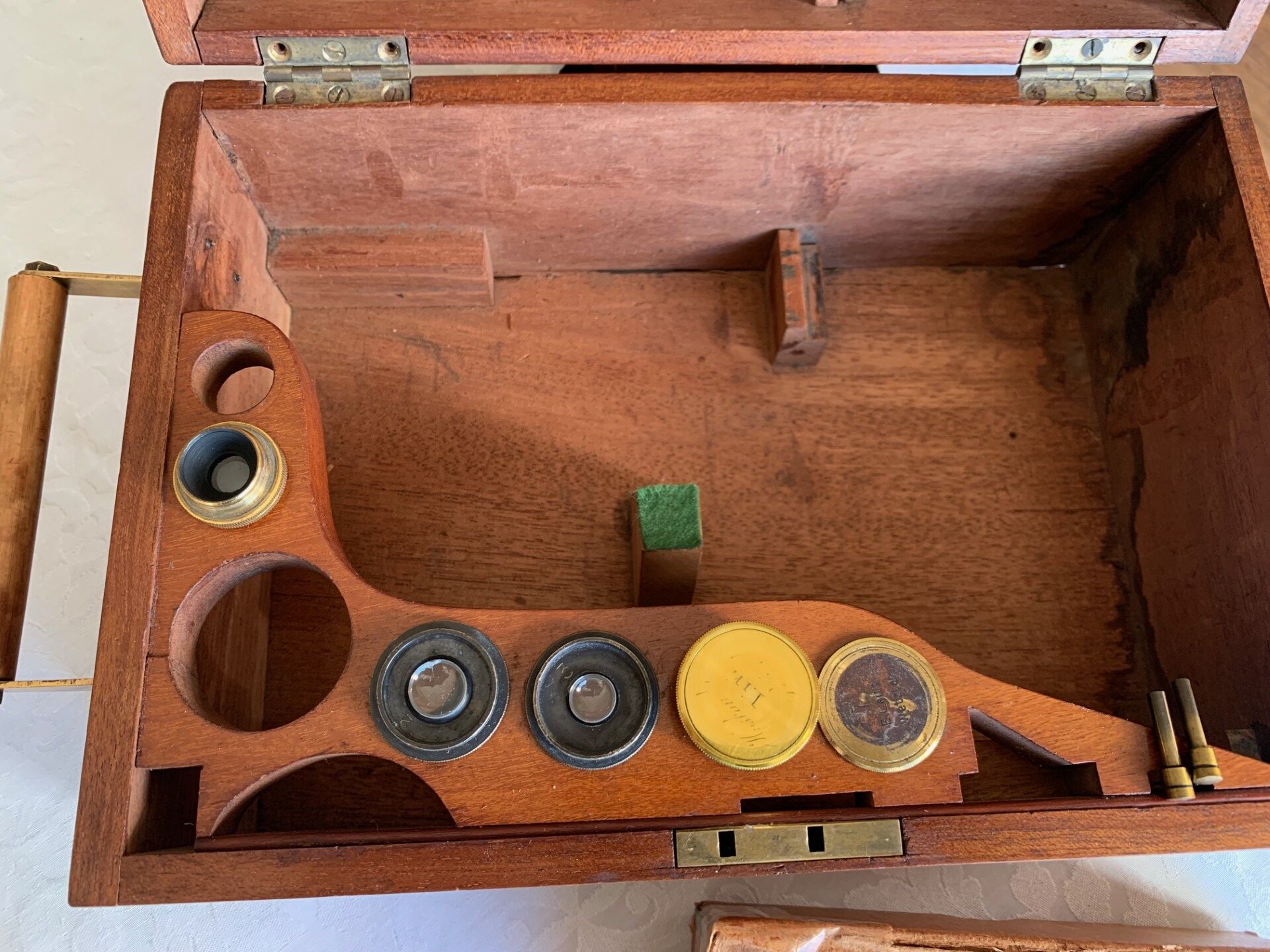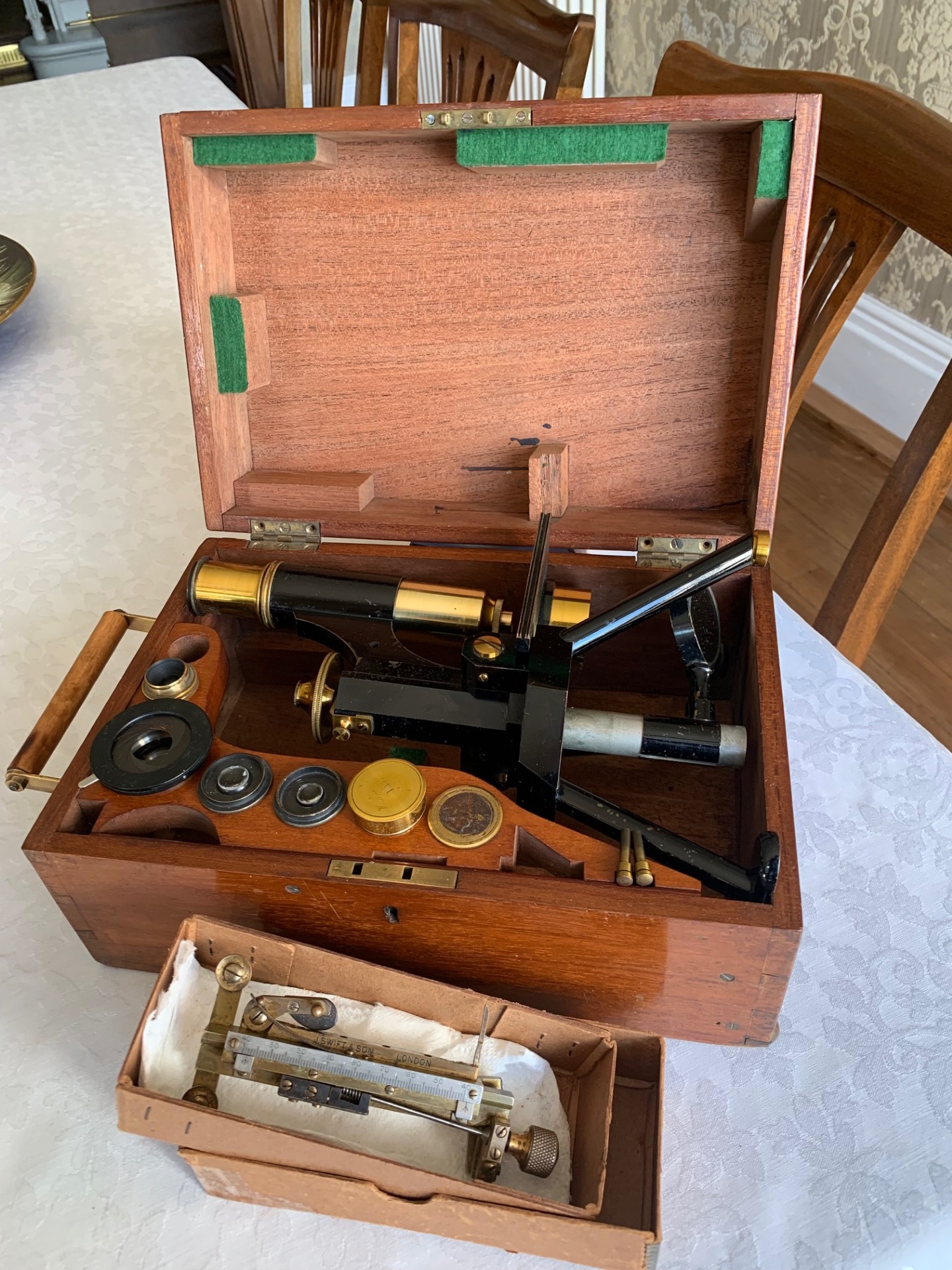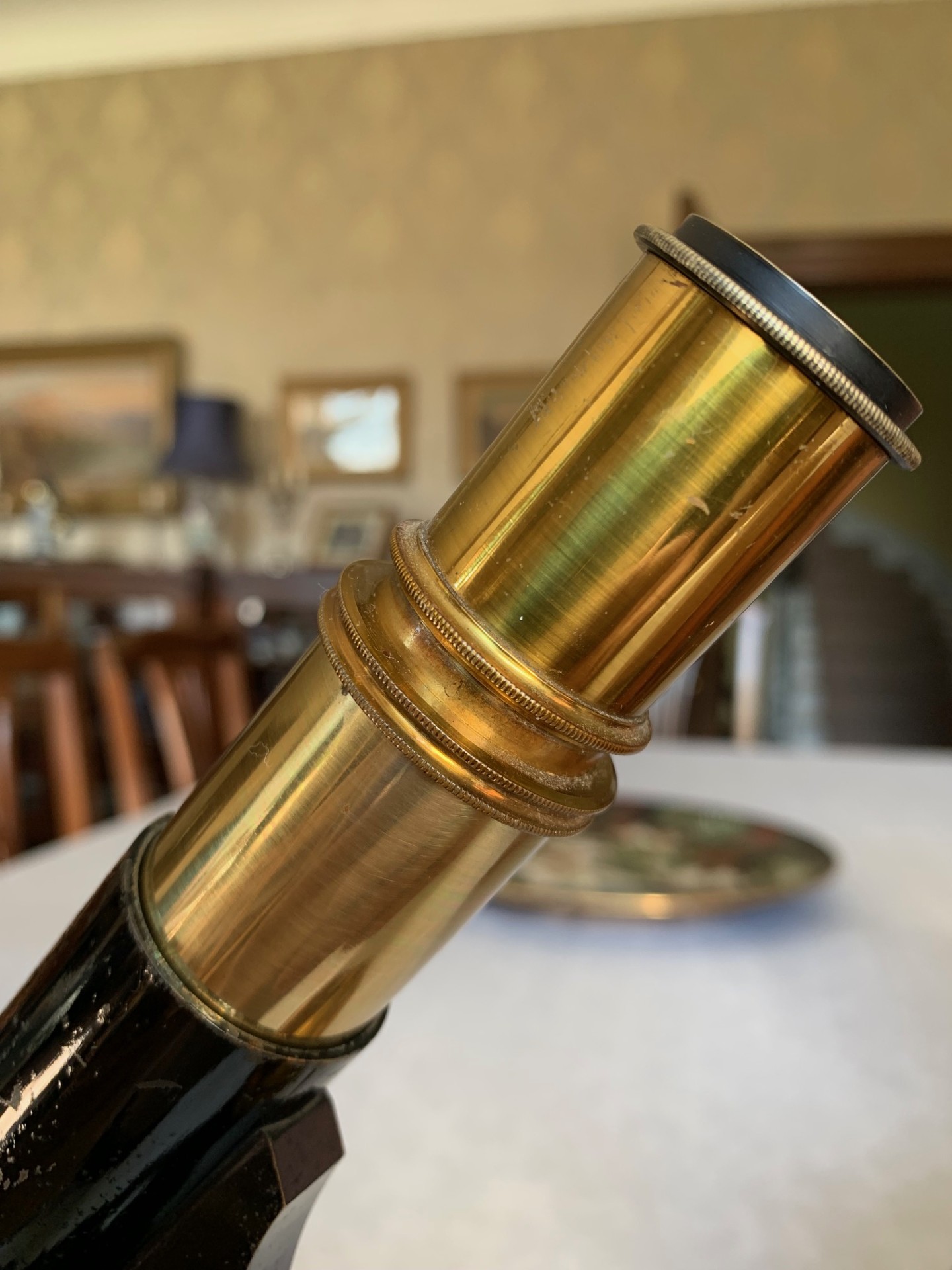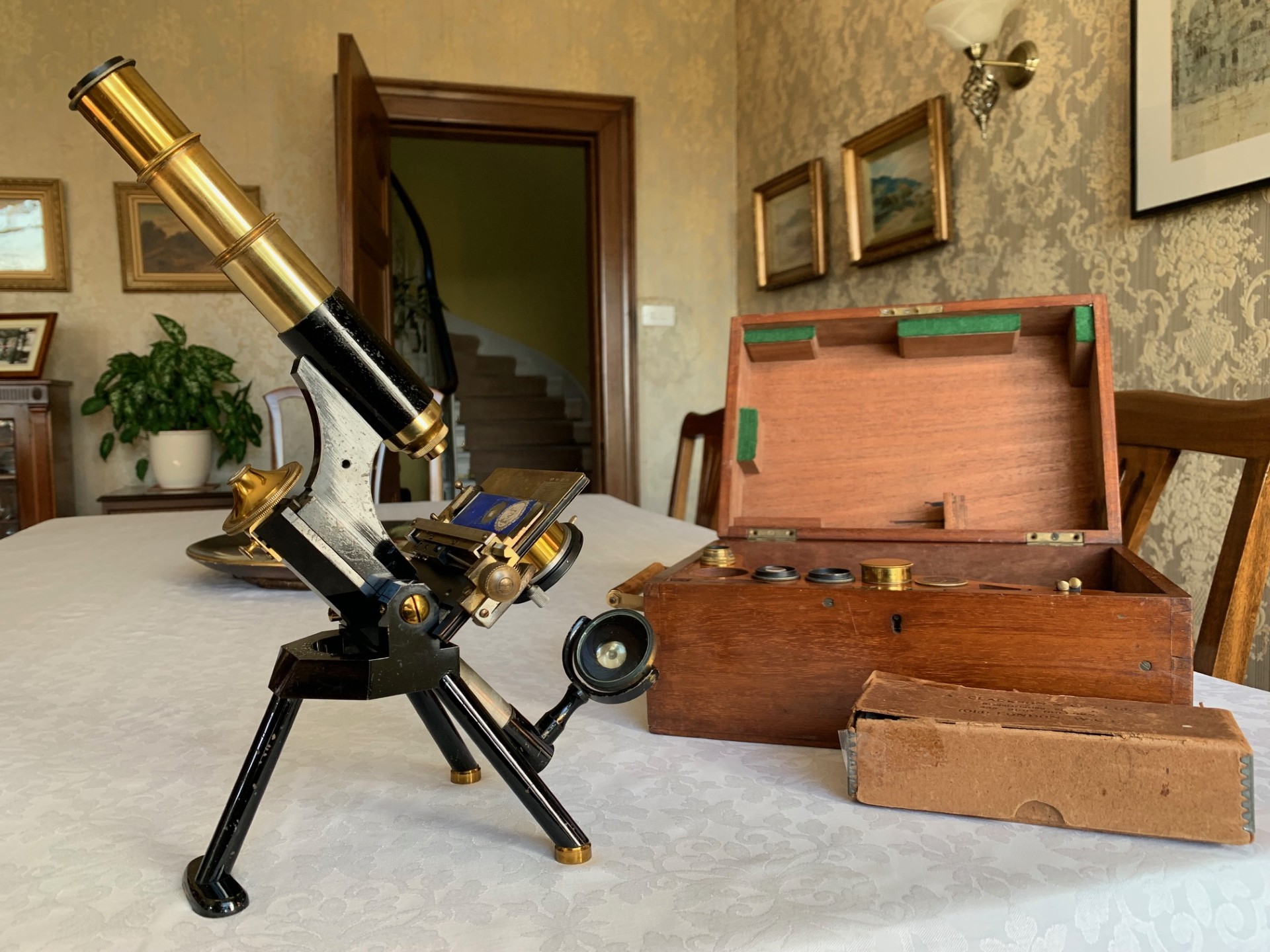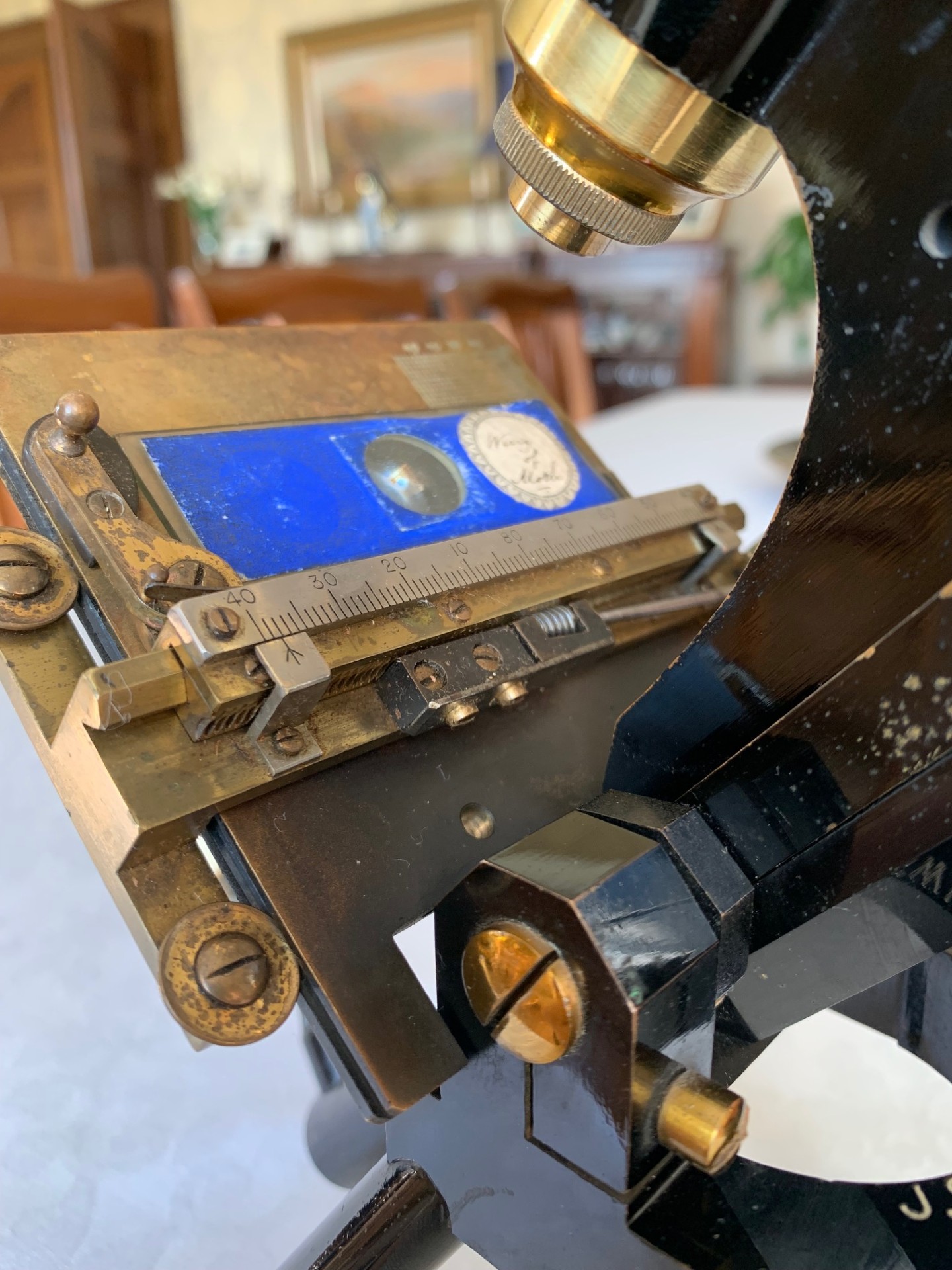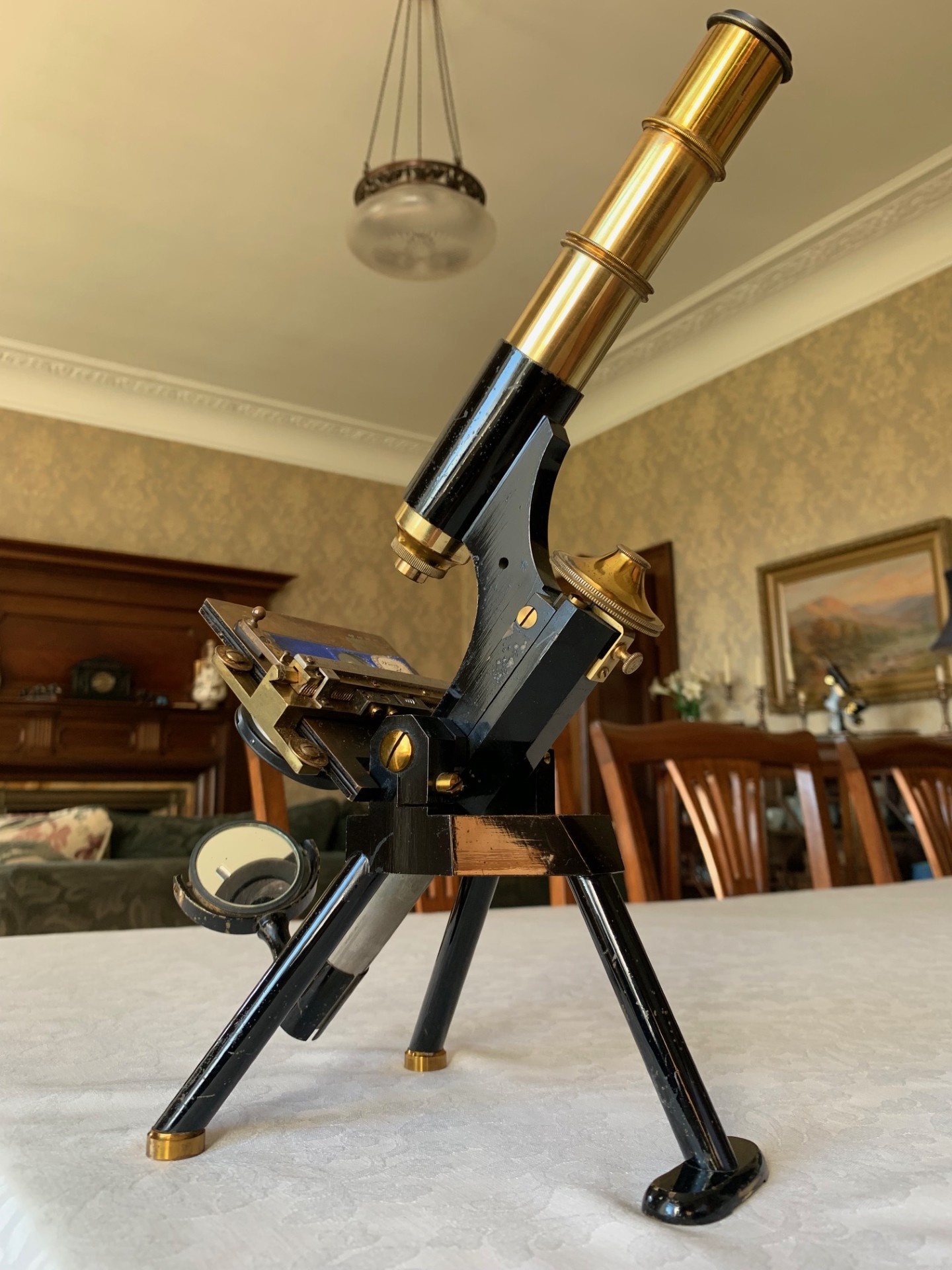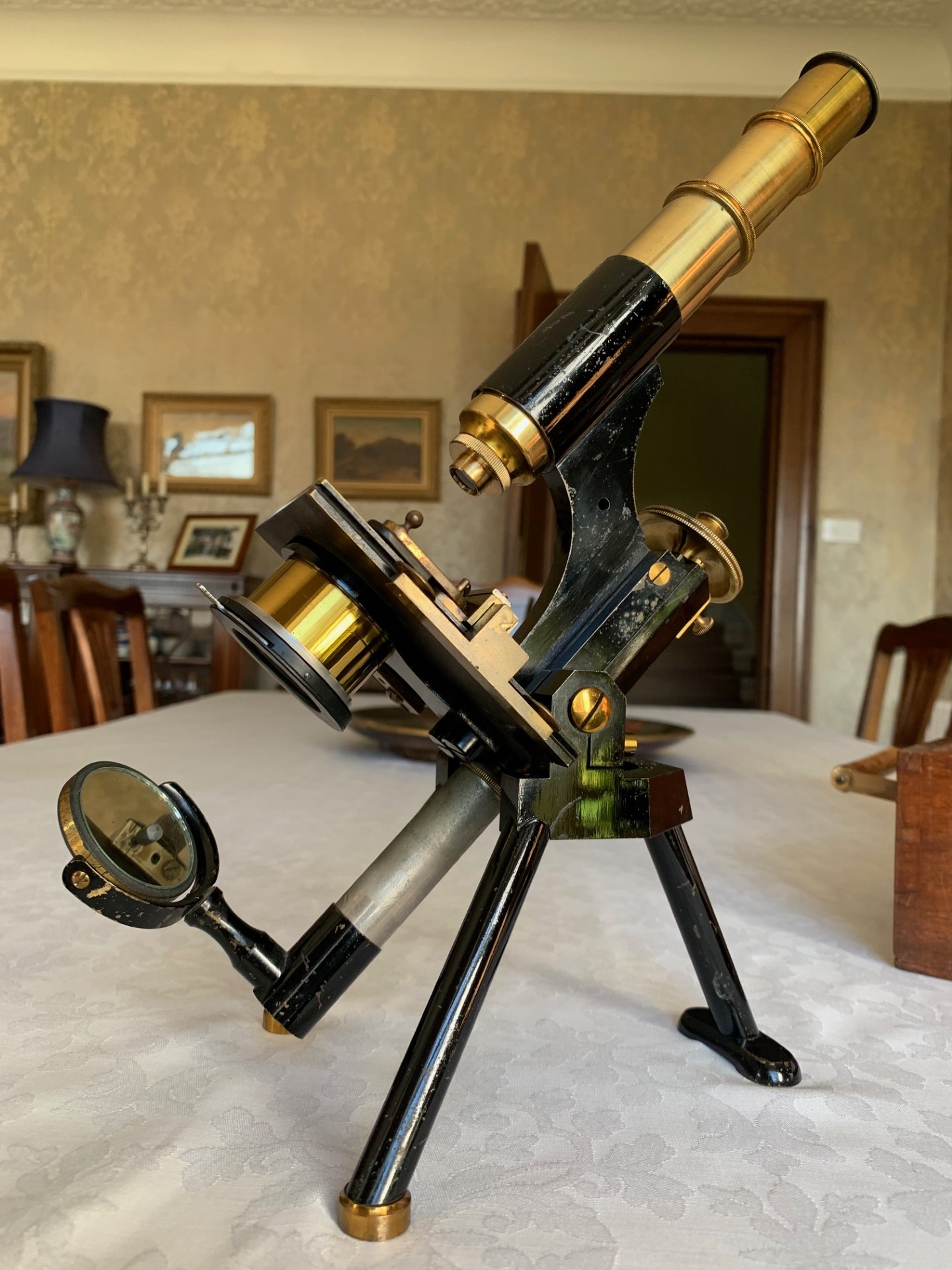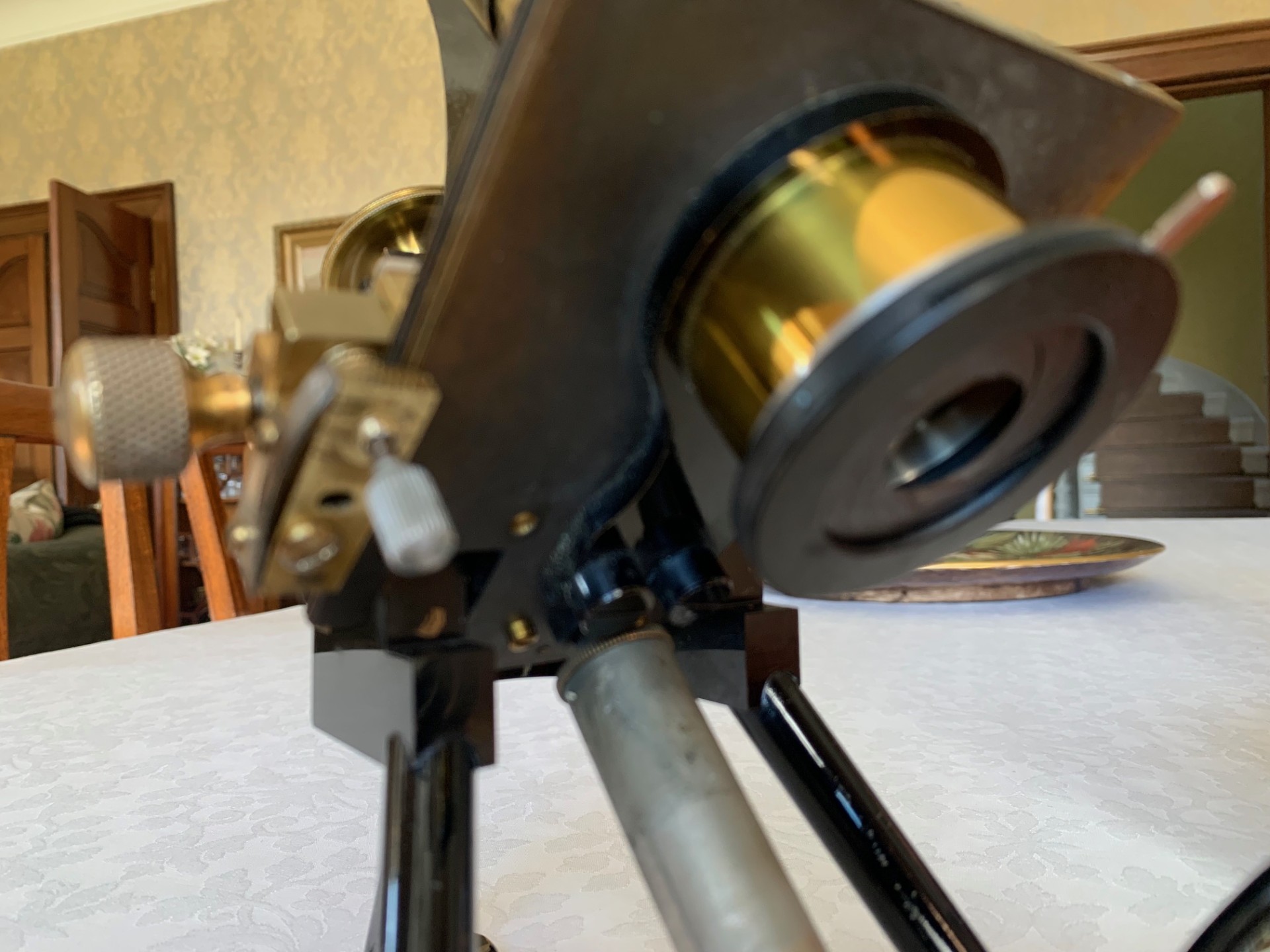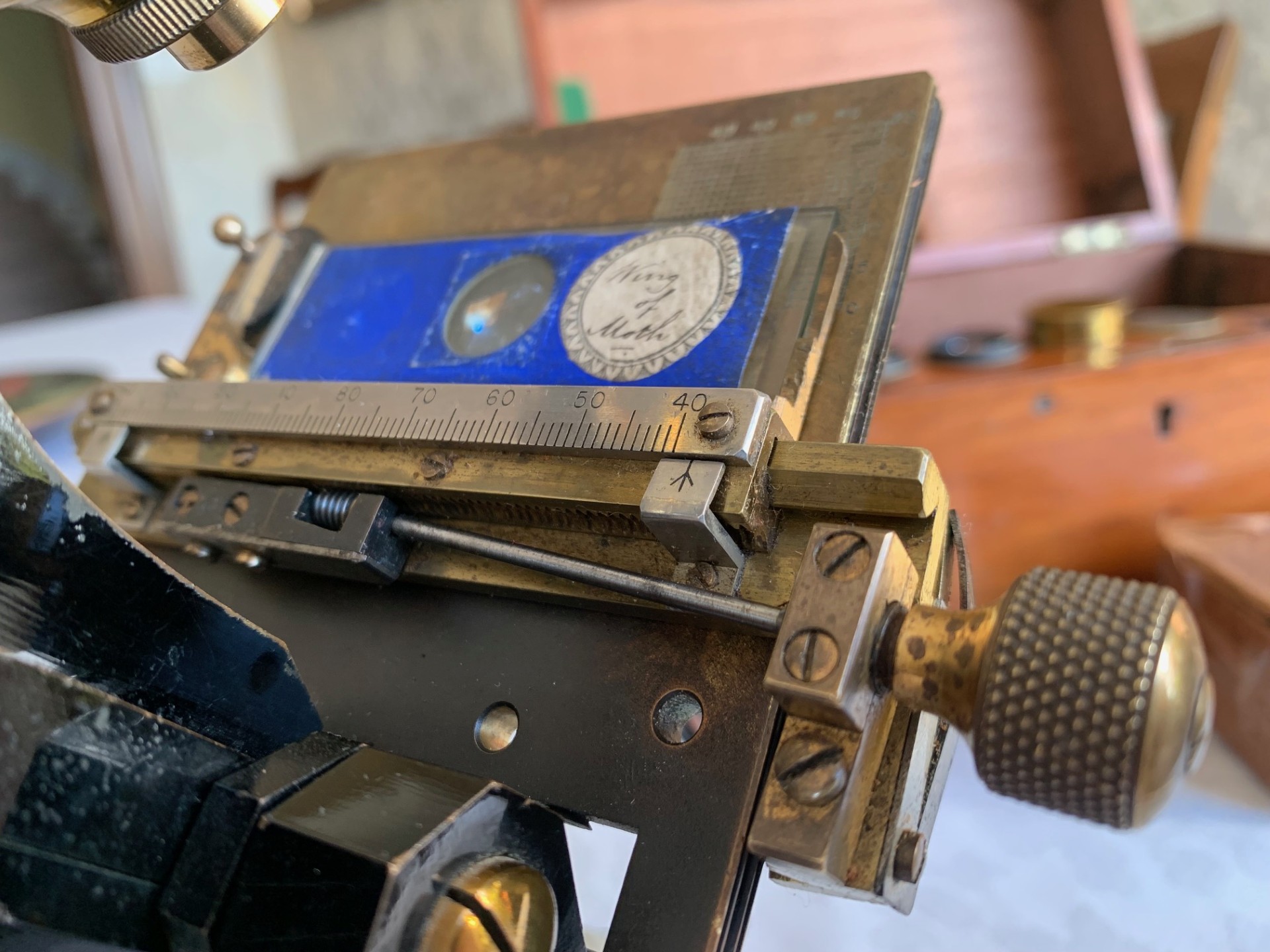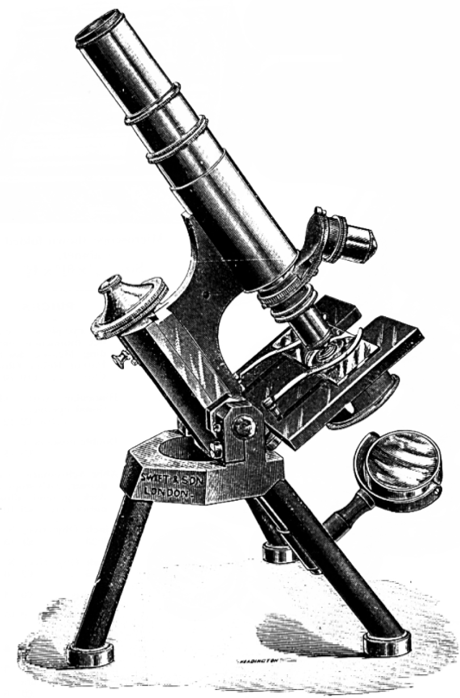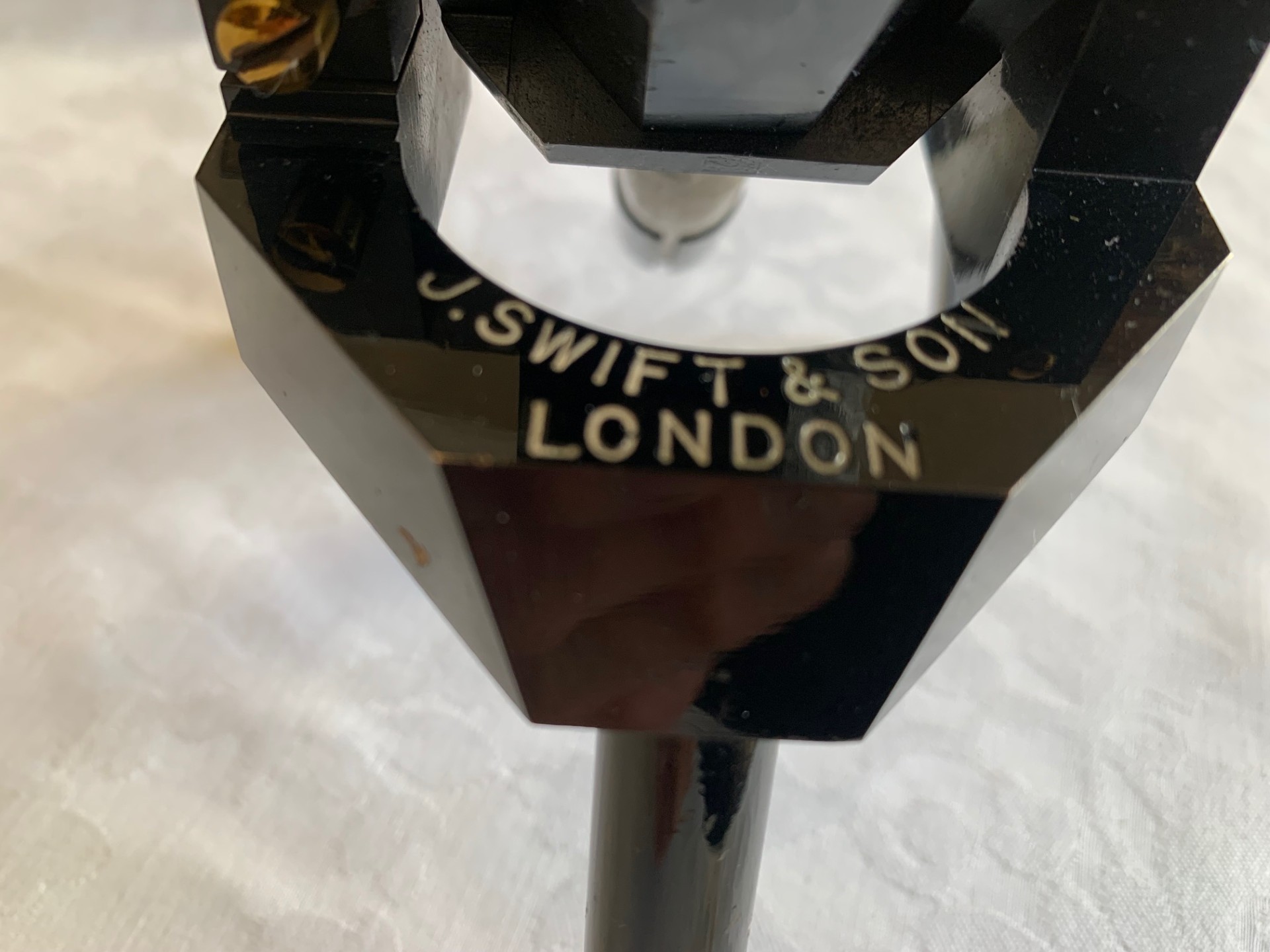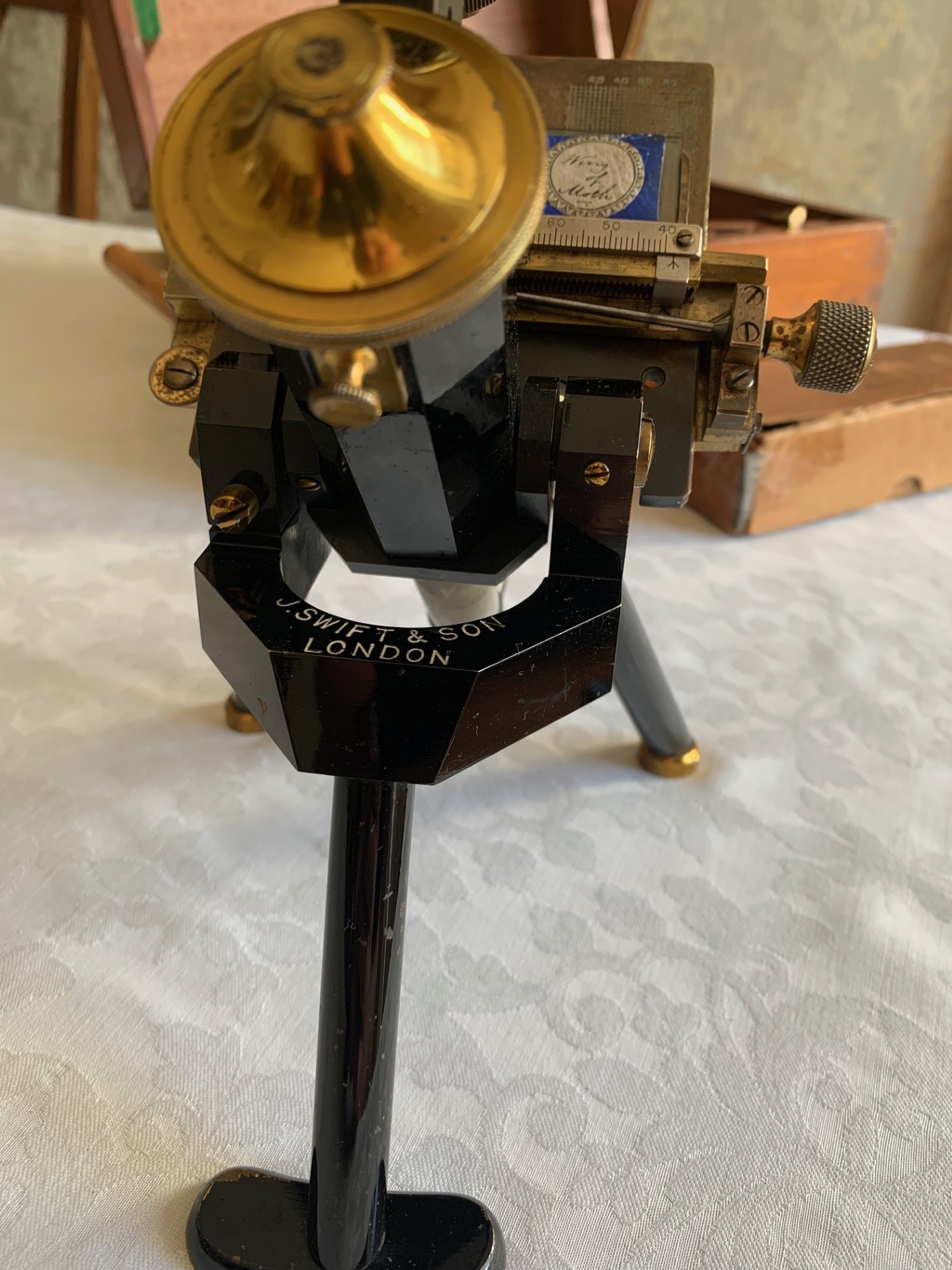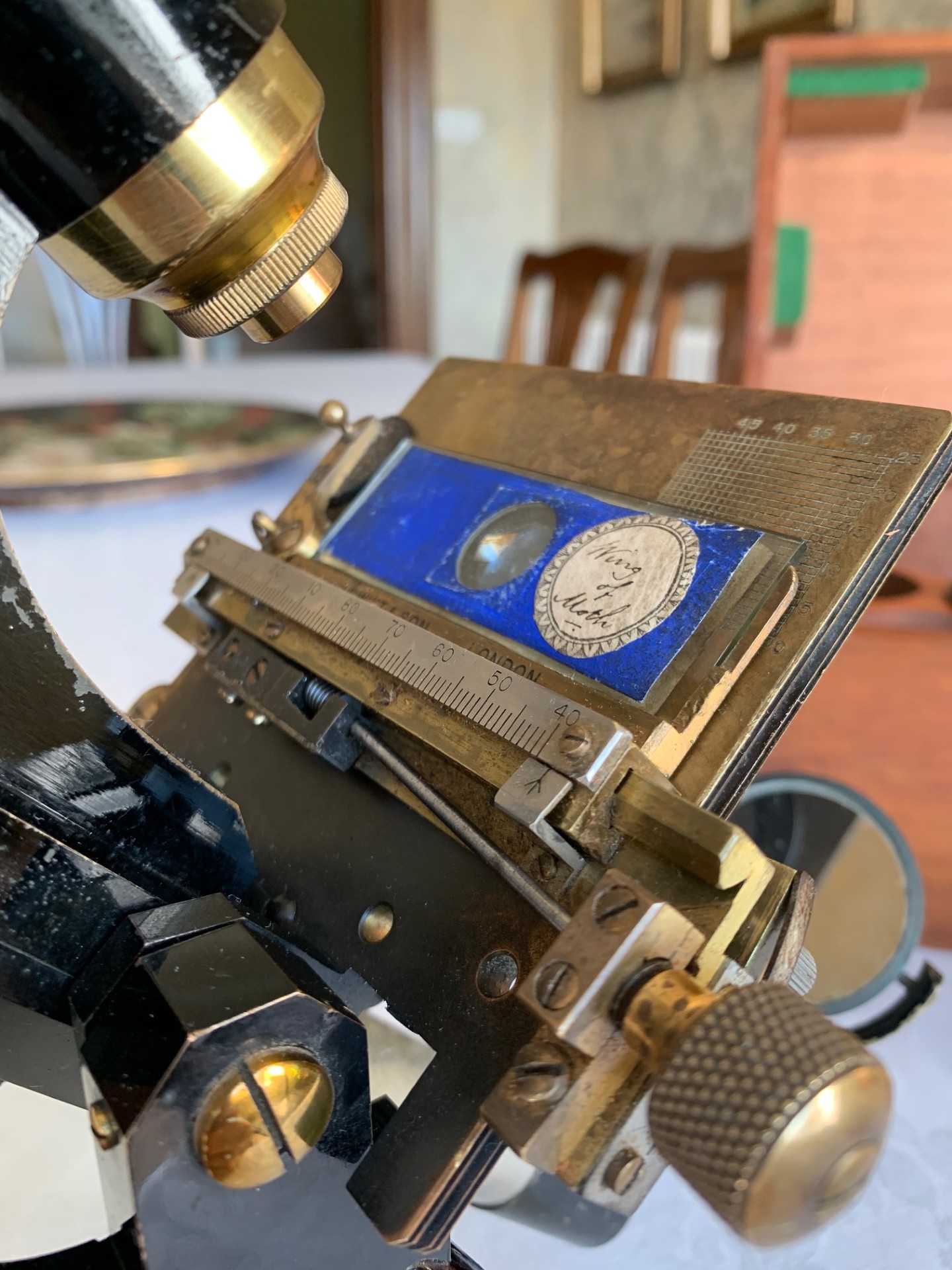Antique J. Swift & Son Histological & Physiological Microscope with Roller-stage – c1900, Cased
£275
Antique collectable monocular instrument by scientific instrument maker J Swift & Son of London dating to about 1900. This model was termed the "Histological and Physiological" model by Swift and this example is also supplied with the parented Swift roller-stage for partial mechanical control of specimen positioning.
Circa
1900
Maker
J. Swift & Son, London
Country of manufacture
UK and Ireland
Description
Background to J Swift from Antique Microscopes’ website:
James Swift were microscope makers trading from London and were founded in 1853 by James Powell Swift, who was the son of the watchmaker Thomas Swift. Before founding his company, James Swift was apprenticed to the well-known microscope maker Andrew Ross. In 1881 Swift brought in improvements to microscope design, including replacement of straight rack and pinion focusing with helical cut components along with a new fine focus mechanism. In 1884, Mansell James Swift, son of James Powell, joined the company and the firm’s name was therefore changed to James Swift & Son. Captain Scott was supplied with Swift microscopes for use on the RRS Discovery for his 1901-1904 Antarctic expedition, named in the catalogue of the time as the ‘Discovery’ model. In 1903, Mansell Powell John Swift, grandson of the founder, joined the company. In 1906, the founder of the company, James Powell Swift, died. In 1912, the company was incorporated as a limited company and the firm’s name changed to J. Swift Ltd. In 1942, both Mansell Powell and Mansell James died. In 1946, ER Watts and Son Ltd took over the company, mainly due to the association between the Watts and Swift families in earlier years. In 1949, they employed John H. Basset who, in 1968, took over the company.
This example of a late Victorian Swift instrument is in very good cosmetic condition for its age and presents well with lovely gleaming brass-work details, bright lacquer and black paint-work finishes and just a little age-appropriate patination here and there to lacquer and painted surfaces. It’s survived well over the last 130 years or so and the lacquered brass-work still catches the light as I hope the listing photos illustrate. The instrument’s look and feel is of a quality not found in modern microscopes in that’s it’s fashioned from solid brass, giving it a heavy feel and quite a presence when in use with coarse focus and draw-tube fully extended.
Technical details – the construction is a black-painted brass tripod foot, with twin brass bun-feet at the front and a heavier flat toot at the rear giving extra stability. From the tripod twin uprights supporting a pivot and a continental pillar-style upper limb. Coarse focus is by a friction-fit optical tube in brass with additional draw-tube also in brass. This sits in a mount held in place by friction and the focusing technique is by push-pull sliding of the main optical tube, which works surprisingly well giving smooth control of coarse focus adjustment with a nice intuitive tactile feel. Fine focus is controlled by a brass thumb-wheel atop the continental pillar, which also works well with some resistance and good smooth fine adjustment.
In terms of its optics, this microscope is fitted with Swift eyepieces as under:
– No. 2 – 6x magnification (there’s also a second No. 2 eyepiece with an internal crack to optical element)
– No. 3 – 8x magnification
The eyepieces work well giving nice bright images. It’s also got a objective lenses with RMS thread which fit to the optical tube one by one, as under:
– 1.5 inches – 4x magnification – unbranded brass button objective
– 2/3 inch by Swift – 10x magnification
– 1/6 inch by Swift – 40x magnification (does not focus)
– 1/6 inch – 40x magnification – unbranded brass objective
The magnification range available with its current set of optics is therefore 24x to 320x. I’ve tested the optics with various antique slides and the images produced are perfectly acceptable when using good illumination.
The instrument tilts for inclined viewing and holds in position through its working range as it should. The specimen stage is fitted with twin clips which work well for holding slides steady and as an alternative to conventional slide clips, I’ve added an antique patented Swift roller-stage. This is a mechanical over-stage that fits the brass stage perfectly with a thumb-wheel on the right-hand side moving the x-axis and slide holder arms for gripping the slide, with the left-hand one sprung. As for the y-axis, this has to be moved manually, as the the mechanism for this range of movement is not functional, but the y-axis moves freely with light manual pressure and holds position on inclination. Overall, the roller-stage is fitting period enhancement to the instrument.
Sub-stage there’s 39mm friction-fit mount to which fits an Abbe-type condenser (later example) with working iris as shown in the listing photos. Lighting is via a double-sided plano-concave mirror in a brass carrier and gimbal mount, with a useful range of height and rotation adjustment, with good period silvering.
There’s also a nice fitted hardwood case as shown in the listing particulars. It’s just missing a key and with the odd shrinkage crack to a panel or two, it’s otherwise in very good condition for its age. There’s also a period cardboard box for the roller-stage.
In terms of condition/maintenance, the instrument has been very lightly lubricated with non-hardening grease, so that the controls operate smoothly. This example of a late Victorian Swift compact microscope while being very usable and a good desk-top instrument in view of its dimensions, should also make an interesting technical display piece, perhaps in a library or home office type of setting, especially when set up with an appropriate antique slide such as the Victorian paper-covered slide I was using for testing purposes as shown in the listing photos.
Owing to the weight and delicacy of this antique microscope, it will be partially dismantled, carefully wrapped for shipping and dispatched by insured courier upon receipt of cleared funds.
Thanks for looking.
Ask the Dealer
Dealer information
 Arcboutant Scientific
Arcboutant Scientific
Howard Nutton based in Glasgow Scotland with a background in Natural Science along with previous career in risk management. I obtained my first antique microscope in 1988 - it was a Watson Edinburgh model H serial number 23604 - dating it to 1918. Since that time I've owned and restored hundreds of similar instruments. As Arcboutant Scientific now also making available personally curated fine examples, principally of antique microscopes and associated scientific equipment by quality English and Continental makers, to collectors world-wide.




